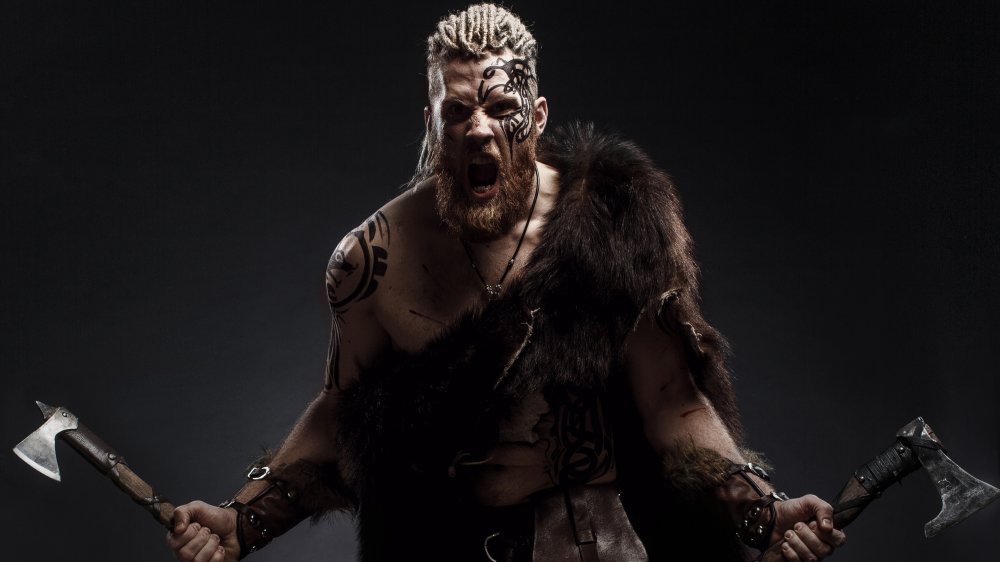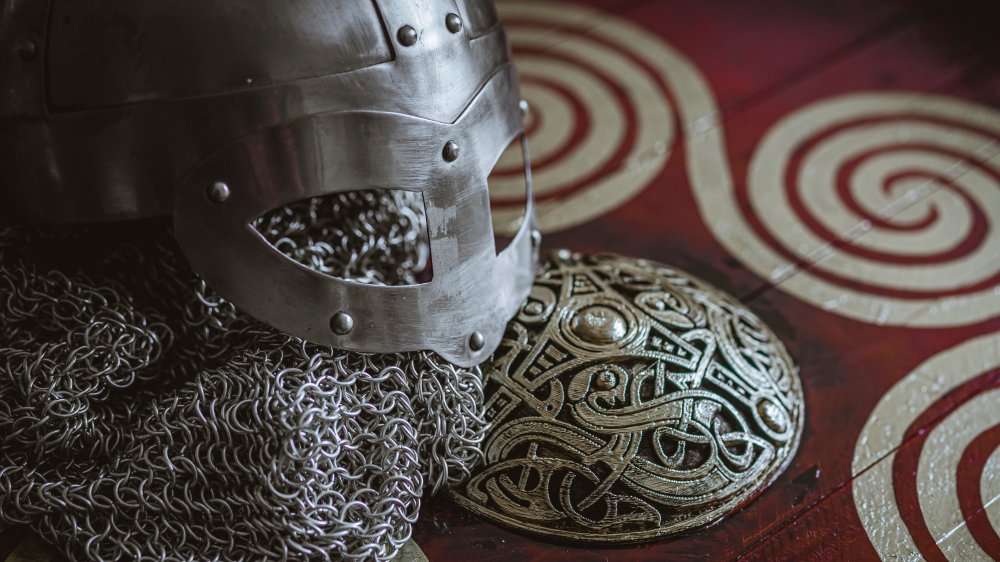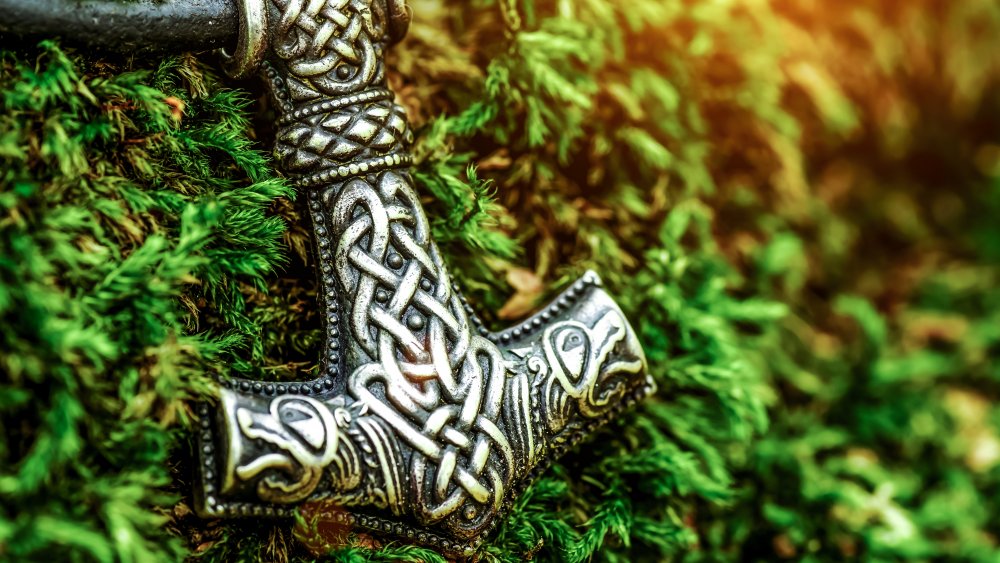The Truth About Viking Symbols And Their Meanings
You're fresh out of high school, flipping through the picture book at Krazy Kat Tattoos, looking for the best image to signify to Mom and Dad that you're an adult now, ready to become a millionaire and then create sponsored Facebook posts about your success. All of a sudden, you stumble upon a striking symbol that catches your eye — it looks like a spiny snowflake, which is pretty cool. But in reality, it's far cooler, because it's actually called "The Helm of Awe," one of the most powerful Viking symbols with an equally powerful meaning.
According to Norse Mythology (who else?), The Helm of Awe represents a "sphere of magical power to strike fear into the enemy. It was associated with the power of serpents to paralyze their prey before striking." Its power is "centered in the pineal gland and emanating from it and the eyes." Mom and pops won't know what hit 'em.
The Helm of Awe is but one of many Viking symbols dating back to the Viking Age, which began around 800 A.D. and lasted until about 1050 A.D., according to the National Museum of Denmark.
A Thor in your sign
The Vikings lived in Scandinavia, and were one of the world's most successful groups of explorers and conquerors, using their impressive naval skills to create an empire that stretched across much of the world. They also had a very rich mythology, represented in the symbols that would adorn their weapons, boats, jewelry and other items of daily living.
Per Viking Style, there was no distinction between spirituality and reality in Viking culture, making symbols and their runes — which were like the Viking alphabet — incredibly meaningful and even magical to those who believed in them. The hard lives in cold, harsh climates and open ocean lived by the Vikings further increased their reliance on symbols to provide strength and faith in times of adversity.
Modern marvels
Other Viking symbols that you may recognize include Yggdrasil, which many will recognize as "The Tree of Life," which "holds together the nine realms of existence with its branches and roots." There's also Mjölnir, which Marvel fans will know as Thor's Hammer — "one of the most fearful and powerful weapons in existence." When not high-key pounding Loki, it was "used during ceremonies to bless marriages, births, and funerals. Despite the chaos the weapon was capable of achieving, this symbol represents blessing, consecration, and protection."
And there's one more you'll definitely recognize, with a shudder. The swastika is actually a Norse symbol. Though its meaning has been muddied by the despicable acts of Hitler and his Nazi cronies, swastikas were "closely tied to the sunwheel and Thor's hammer. In fact, many hammers had swastikas engraved onto them. This symbol was meant to symbolize holiness, luck, safety, and prosperity."
There are many more, and much deeper histories associated with Viking symbols and Norse mythology, but in a nutshell, these were symbols that held great power, and meaning that cut to the very souls of those who believed in their power. The closest a Christian would have to a symbol with equal power would be the crucifix, and in fact, the end of the Viking Age began with their conversion to Christianity, per Smithsonian.


